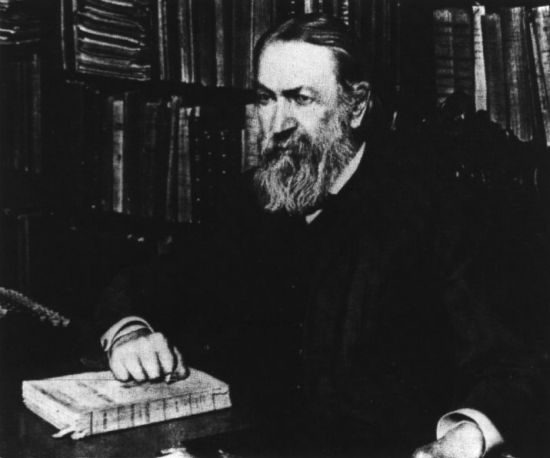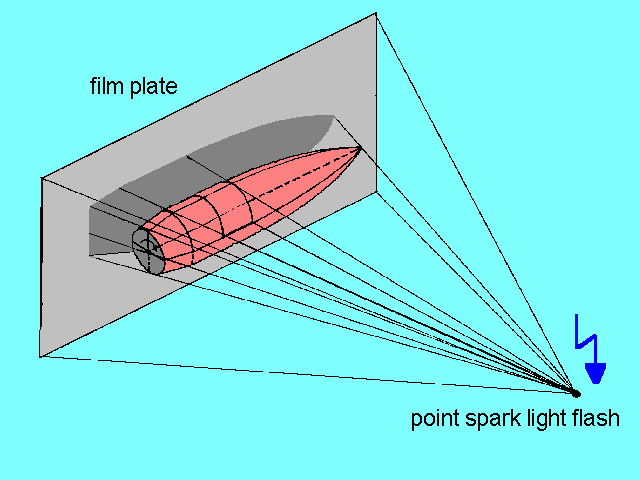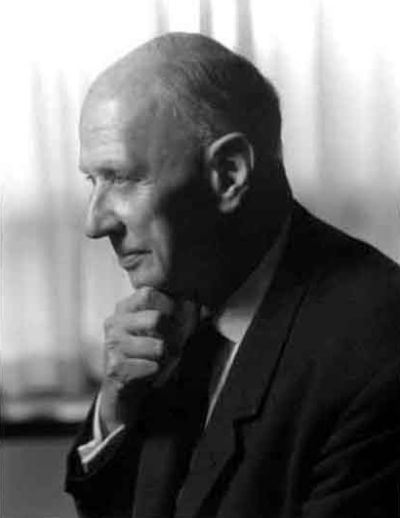|
||||||||||
|
|
||||||||||
|
||||||||||
|
|
||||||||||

Ernst Mach was born on 18 February 1838 in the Austrian town of Turas. His father studied philosophy and classical literature while his mother was a musician and poet. The family lived on an isolated farm where Mach's father raised silkworms and tutored young Ernst in Latin, Greek, history, algebra, and geometry. Though Mach had been a rather average student through grade school and high school, his intellectual talents emerged while attending the University of Vienna. There, he studied mathematics, physics, philosophy, and history, receiving his PhD in physics in 1860 for his thesis "On Electrical Discharge and Induction." Mach was actually offered a position as a professor of surgery at the University of Salzburg, but he instead took a position as a professor of physics at the University of Graz in 1864. Mach later moved to the University of Prague in 1867 where he taught experimental physics for the next 28 years.
Mach's great contributions to understanding supersonic aerodynamics came in the revolutionary paper "Photographische Fixierung der durch Projektile in der Luft eingeleiten Vorgange" that he presented to the Academy of Sciences in Vienna in 1887. In this paper, Mach published the very first photograph of the shock waves formed by a bullet traveling faster than the speed of sound. The photo, shown below, illustrates the strong shock wave formed by the nose of the bullet, the weaker shock wave created at the aft end of the bullet, and the turbulent wake downstream of the bullet's base. Also visible in the photo are two vertical lines made by the trip wires that triggered the camera as the projectile passed by.

What makes Mach's achievement all the more remarkable was the technique he used to take the historic photograph. He employed an innovative approach called the shadowgraph. A typical shadowgraph experiment is illustrated below. In this technique, light is passed through an airflow and reflected onto a screen or film plate. Since shock waves create changes in the temperature and density of the airflow, the light waves are bent, or refracted, as they pass through the shock waves. These refracted light patterns create shadows that can be seen on the screen.

Not only was Mach was able to make the invisible shock waves visible, but it is even more amazing that he was able to photograph the phenomenon. His experiments required split-second timing in an age before computers or electronics were available. Mach's shadowgraph technique and a related method called Schlieren photography are still widely used to observe supersonic flowfields even today.
Yet Mach's contributions to supersonic aerodynamics were not limited to experimental methods alone. He was also the first physicist to understand the basic characteristics of supersonic flow. We know today that one of the most important variables affecting aerodynamic behavior is the speed of the air flow over a body (V) relative to the speed of sound (a). Mach was the first to recognize that dependency. He was also the first to note the sudden and discontinuous changes in the behavior of an airflow when the ratio V/a goes from being less than 1 to greater than 1. Today, we call this ratio the Mach number (M):
However, Mach himself did not coin the phrase. The term was first publicized in 1929 when Swiss engineer Jakob Ackeret (1898-1981) named the variable in honor of Mach during a lecture at the Eidgenossiche Technishe Hochschule in Zurich. The term did not appear in English publications until 1932, 16 years after Mach's death on 19 February 1916.

Mach's life spanned 78 years, and his contributions to human knowledge during that time are impressive. In
addition to his writings and lectures on supersonic flow, Mach's studies also included physical optics, the history
of science, mechanics, philosophy, the origins of relativity theory, physiology, thermodynamics, the sugar cycle
in grapes, the physics of music, and classical literature. Mach also wrote about world affairs, including a
prescient commentary on the "absurdity committed by the statesman who regards the individual as existing solely for
the purpose of the state" that was about a century ahead of its time. Mach received severe criticism for his
statement by no less than Vladimir Lenin, future leader of the Soviet Union. Mach's studies of supersonic
aerodynamics are still taught to aeronautical engineers, but he is even more widely known in philosophy classrooms
where his thoughts on epistemology--the study of knowledge--are still discussed.
- answer by Jeff Scott, 9 November 2003
Related Topics:
Read More Articles:


|
Aircraft | Design | Ask Us | Shop | Search |

|
|
| About Us | Contact Us | Copyright © 1997-2023 | |||
|
|
|||